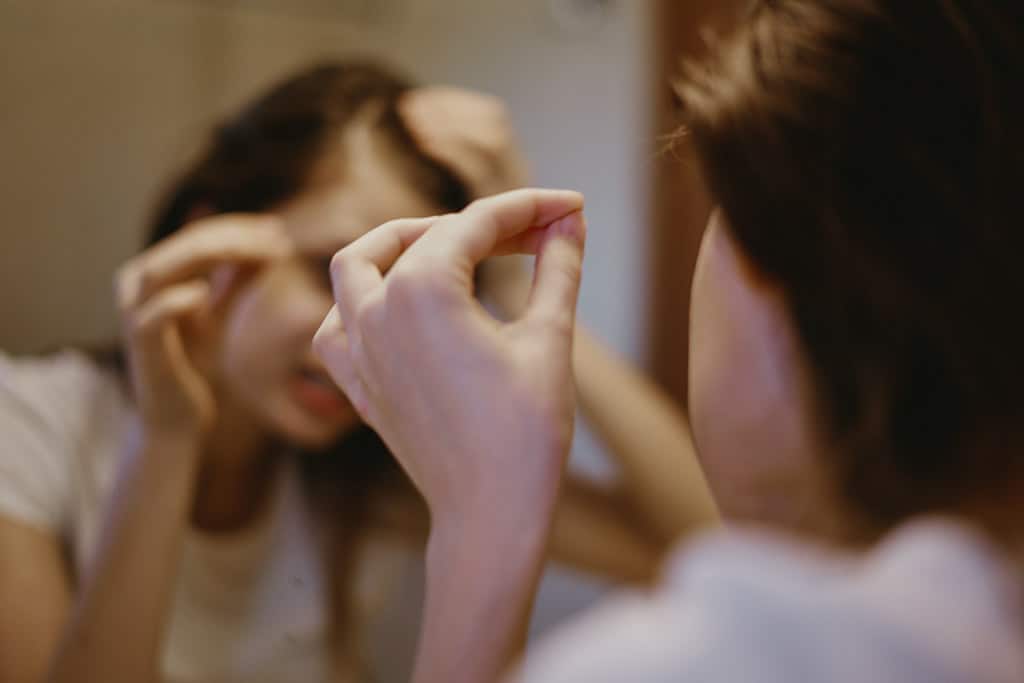The Science of Female Pattern Hair Loss
Female Pattern Hair loss (FPHL) is the term used to describe a genetic tendency for hair loss in women. The genetic tendency is strong, and makes the hair sensitive to hormonal changes, particularly estrogen and male sex hormones. It is the most common cause of thinning and hair loss in women.
90% of female hair loss is genetic, affecting about 30 million women in the U.S. The risk of FPHL increases when there is a family history of hair loss.
46% of women hide their hair loss and feel shame and embarrassment. FPLH affects a woman’s confidence and personality. Dissatisfaction with appearance, body image distress and low self-esteem, as well as stress, depression and anxiety impact quality of life. Many women view hair loss as life-altering.
What is the pattern in FPHL?
The pattern of hair loss in women is different than in men. The hair line does not recede. Instead, the first sign is widening of the part, that over time progresses to diffuse thinning of the frontal scalp, temples and vertex (the crown) of the head. There are not distinct “bald” areas, and most women notice that their ponytail diameter is smaller.
Some women have diffuse hair thinning all over the head. Hair thinning may accelerate for a few months, and then stabilize for a few months due to the normal cycles of hair and hormones.
Most women do not go bald or lose all of their hair. Rather, as they age, new hairs grow in finer and thinner, evidence of shrinking hair follicles. Eventually the follicle stops growing hair.
What causes female pattern hair loss?
FPHL is caused by a combination of a genetic tendency, androgens or male sex hormones, and aging. The genetics of FPHL are milder than in men, and the role genetics play is less clear.
The genetic tendency combined with the enzyme that converts testosterone into dihydrotestosterone (DHT) causes the hair follicles to produce thinner and finer hair.
Women do experience higher blood levels of testosterone as they age and estrogen levels decrease during and after menopause.
The current science shows that FPHL is genetically predetermined, and multifactorial including hormone and non-hormone causes. The science is clear that there is an alteration of the hair growth cycle which causes a gradual reduction in the growth phase and an increase in the time between when hair is shed and when new hair grows.
Who is affected by FPHL?
In genetically susceptible women, FPHL usually begins between the ages of 40 and 60, but can begin earlier. It is most common after menopause because of a decline in production of estrogen which protects the hair follicles.
Is FPHL reversible?
FPHL is a permanent condition, and cannot be reversed. But when the miniaturized hairs are still present, treatments may be able to slow the process. All hair loss is not the same. Early diagnosis and treatment of FPHL are effective to avoid progression of hair loss.
If you are concerned about your thinning hair, schedule an appointment at Moy, Fincher, Chipps Facial Plastics & Dermatology to get the correct diagnosis and learn about your treatment options.
References
https://www.haarstichting.nl/actueel/nieuws/Female-pattern-baldness-and-genetics
American Academy of Dermatology www.aad.org
Fabbrocini, G, Female Pattern Hair loss: A clinical, Pathophysiologic and therapeutic review. International Journal of Women’s Dermatology https://doi.org/10.1016/j.ijwd.2018.05.001
Ioannides D, Tosti A (eds): Alopecias – Practical Evaluation and Management. Curr Probl Dermatol. Basel, Karger, 2015, vol 47, pp 45-54
https://doi.org/10.1159/000369404
https://rarediseases.info.nih.gov/diseases/9269/androgenetic-alopecia
Davis DS, Callende VD, Review of quality of life studies in women with alopecia.
Int J Womens Dermatol. 2018 Jan 9;4(1):18-22. doi: 10.1016/j.ijwd.2017.11.007. eCollection 2018 Mar.






